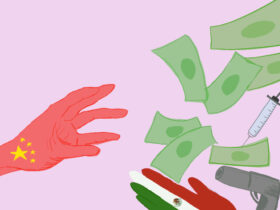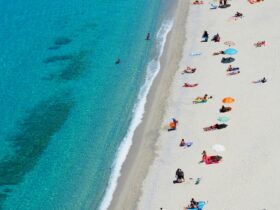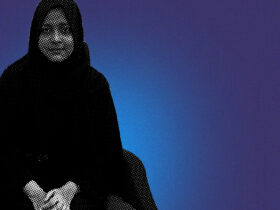LOS ANGELES — On July 14, 2015, thousands of Iranians flooded the bustling streets of Tehran, surrounded by the uproarious honking of cars, celebratory chants and triumphant smiles. It was the day the Joint Comprehensive Plan of Action (JCPOA) was signed — a revolutionary accord that required the Islamic Republic of Iran to dismantle a majority of its nuclear program and allow for international inspections.
In exchange, nuclear-related sanctions would be lifted once the International Atomic Energy Agency (IAEA) verified that Iran had taken the steps to roll back their nuclear program. The controversial agreement was designed to repair the relationship between the United States and Iran after numerous tumultuous decades.
For moderate Iranians, the JCPOA ignited a sense of unprecedented optimism for a new beginning — one that could integrate Iran into the international community, allowing for economic prosperity and policy reform within the nation. These sentiments were echoed by the Obama administration, as their top Deputy National Advisor Ben Rhodes said that the agreement would produce an “evolution in Iranian behavior,” while simultaneously implying a reduction in the systemic human rights abuses within the nation.
While the JCPOA was primarily viewed as a nuclear and economic agreement, there was hope that the deal would inspire a shift in the sociopolitical governing of the Iranian regime. Prior to the deal, Iran had a long-lasting history of alleged American hostage-taking, including the mysterious disappearance of Bob Levinson, a former Federal Bureau of Investigation Agent, and Siamak Namazi, an Iranian-American businessman. In the days preceding the JCPOA’s implementation, former U.S. Secretary of State John Kerry and Iranian Foreign Minister Mohammad Zarif worked to release ten U.S. Navy personnel who were taken into Iranian custody after straying into the nation’s territorial waters.
On January 16, 2016, the day the JCPOA went into effect, Iran agreed to release all remaining jailed dual nationals, implying renewed diplomatic intentions. However, the same year, Iran further imprisoned several other dual nationals, making it abundantly clear that Iran’s true motives in regard to diplomatic and human rights relations had not reformed. Instead, Iran’s support for Houthi rebels in Yemen, a U.S. declared foreign terrorist organization, increased, initiating a concatenation of consequent violations.
The largest human rights violations following the JCPOA’s implementation were the inhumane conditions within Iranian penitentiaries faced by free speech proponents which were carried out without basic due process. Prisoners continued to be executed, their deaths symbolizing the consequences of rebellion. Human rights activists and citizen journalists have carried the majority of the burden, as they uphold the reputation of being the regime’s most formidable threat. A majority of political activists’ executions are justified by the Iranian government through false convictions that require barbarous punishments or the clandestine selection of a scapegoat to pin government officials’ crimes on.
According to an informed source, Hossein Jozi, a protest organizer during the 2019 riots, was kidnapped and murdered by the Islamic Revolution Guards Corps (IRGC). Farhad Vosoughi, a 27-year old husband and father, was accused of killing Jozi and unlawfully subjected to solitary confinement — without ever having received legal assistance. During his sentence, his brother cited the fierce torture Farhad Vosoughi’s endured that led to his eventual death. Following his demise, prison judiciary officials further threatened Vosoughi’s family to equivocate the truth to the press.
Sina Ghanbari, another political activist, was incarcerated and rumored to have committed suicide in May of 2018. However, when Ghanbari was lowered into his grave, family members unveiled his head and found signs of a broken skull and smashed left eye.
Aside from mysterious homicides, there were also direct accounts of inhumane treatment through the refusal of medical services within penitentiaries. Behnam Mahjoubi, a prisoner of conscience, was arrested for his involvement in anti-government protests in February of 2018. Despite requiring daily medication for a diagnosed panic disorder, Mahjoubi was intentionally denied proper medical care. According to Mahjoubi’s wife, the correctional physician substituted his prescribed medication with 14 to 17 sleeping pills, a night, which led to his paralysis and untimely death. Their deaths and cruel treatment represent a minuscule fraction of the overwhelming number of political prisoners who bear the burden of seeking free speech.
It has become increasingly difficult to hear the muffled screams of Iranian citizens, as human rights abuses continue to be meticulously buried via government censorship. As there has been little information revealed on the subject, the situation on the ground is best understood through local activists. Shiela, an Iranian local advocate who has extensively studied the sociopolitical climate of the region, spoke to Glimpse from the Globe on the status of human rights post-JCPOA implementation.
“There has been an extensive amount of misinformation spread regarding the satisfaction of Iranian citizens, especially after the signing of the JCPOA,” said Sheila, who requested that her identity be kept anonymous. “Rouhani repeatedly expressed that Iranian citizens were overjoyed at the lifting of sanctions, when the reality is that Iranian families have received no economic assistance and are victims to inhumane living conditions… the painted narrative put forward omits the realities of our hardships. It becomes increasingly frustrating when there is no way to illustrate how human rights abuses have worsened.”
Government mandated censorship does not end at journalist inoculation; the concealment of human rights violations is equally crucial for the Iranian government. During the November 2019 protests, over 300 protesters died and over 7,000 were arrested. An Amnesty International report revealed accounts of relentless torture throughout their prison sentences, including beatings, electrocution, amputation, waterboarding and sexual violence. On the deadliest day of the protests, Iranian authorities purposely blocked all internet access within the nation to conceal the true extent of police misconduct. Till this day, there have been no official criminal investigations or accountability measures taken against the government for the blanket internet shutdown. During the shutdown, many American-Iranians residing in the U.S. turned to non-partisan organizations to shed light on the severity of the protests. While various organizations within Iran claim to be for the people, Sheila said this is not always the case.
“Non-partisan organizations such as the National Iranian American Council (NIAC) claim that they amplify the voices of the Iranian-American community, yet they continuously formulate false testimonies about our experiences and have been repeatedly linked to the Iranian government,” she said.
While the international community may not understand the depth of human rights violations, they have witnessed the multitude of protests that overtook the streets of Tehran in the past decade. Since January 2018, over 5,000 individuals have been imprisoned for engaging in protests surrounding inflation, unemployment and inequality. In May 2018, former President Trump declared that he was withdrawing from the nuclear deal and imposing severe economic sanctions and penalties on Iran. Consequently, Iran has been unable to access its tens of billions of dollars in assets held in foreign entities, mostly in the form of oil and gas exports.
Despite these sanctions causing an increased cost of living, many Iranian citizens had hoped that the increased pressure on the regime could promote accountability, decrease human rights violations and even lead to an eventual government collapse. However, the imposed sanctions produced no change in governmental accountability, causing an eruption of mass dissent. The protests were multifaceted in their aim; while a portion of citizens were protesting the worsening human rights violations, others were opposing the rise of fuel prices and their crippling socioeconomic conditions.
Thus, citizens face a Catch-22 with no axiomatic resolution. During the JCPOA era, the Iranian government was able to access over 50 billion dollars in usable liquid assets to further strengthen their regime and perpetrate severe human rights offenses. However, even during the post-JCPOA era, increased economic sanctions led to civil uprisings, further provoking the government’s police forces to escalate state-sanctioned imprisonment and death rates amongst Iranian citizens.
The entrance of the Biden administration onto the world stage could mark a new era in Middle Eastern affairs. However, reentering a revised deal will not be accomplished as easily as the United States may hope. Since the Trump administration previously withdrew from the deal, Iran has enriched their uranium from 102 kilograms to approximately 2,440 kilograms — more than 12 times the limit set by the JCPOA. They have also halted international inspections of nuclear sites, allowing for the accelerated development of atomic weapons.
Iran has become more powerful, granting them greater leverage at the negotiating table. Although Iran’s economy is in shambles, Iranian hardliners are hesitant to negotiate a new deal following the killing of Qasem Soleimani, an Iranian general who commanded a wing of Iranian military forces. With the upcoming 2021 Iranian Presidential election, a tough fight between hardliners and moderates will indicate the future of U.S.-Iran relations, and more importantly, the future of human rights within the country.
The most feasible and immediate solution for Biden’s administration may be an interim agreement to halt nuclear buildup in exchange for sanction relief and access to oil revenues, allowing an economic boost. Following a potential period of economic relief, popular support for a more moderate presidential candidate could allow the revisiting of a new deal that can further develop diplomatic ties between Iran and the international community.
While economic benefits may be the key to reentering negotiations, the global community cannot continue to turn a blind eye to the number of Iranian lives at stake following the introduction of a new deal. In September of 2020, then-presidential candidate Biden promised to “call out the [Iranian] regime for its ongoing violation of human rights”, citing the execution of Iranian wrestler Navid Afkari as a “travesty” in a September 12th tweet.
Iranians now, more than ever, are urging Biden to impose stringent economic sanctions until Iran is willing to accept accountability for their human rights violations. Only then can the global community and Iran negotiate a feasible nuclear and economic deal that sets human rights at the forefront.







